
How to Use XL4015 Step Down 5-32V: Examples, Pinouts, and Specs
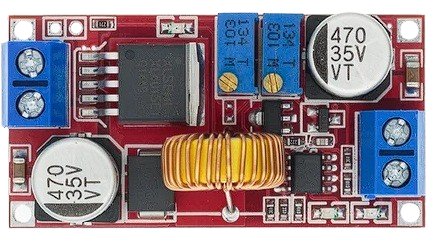
 Design with XL4015 Step Down 5-32V in Cirkit Designer
Design with XL4015 Step Down 5-32V in Cirkit DesignerIntroduction
The XL4015 Step Down 5-32V is a high-performance DC-DC buck converter designed to step down voltage from a higher input level (5-32V) to a lower, adjustable output voltage. It is widely used in applications requiring efficient power conversion, such as battery charging, LED drivers, and powering microcontrollers or other low-voltage devices. With its adjustable output voltage and current capabilities, the XL4015 is a versatile and reliable choice for a variety of electronic projects.
Explore Projects Built with XL4015 Step Down 5-32V
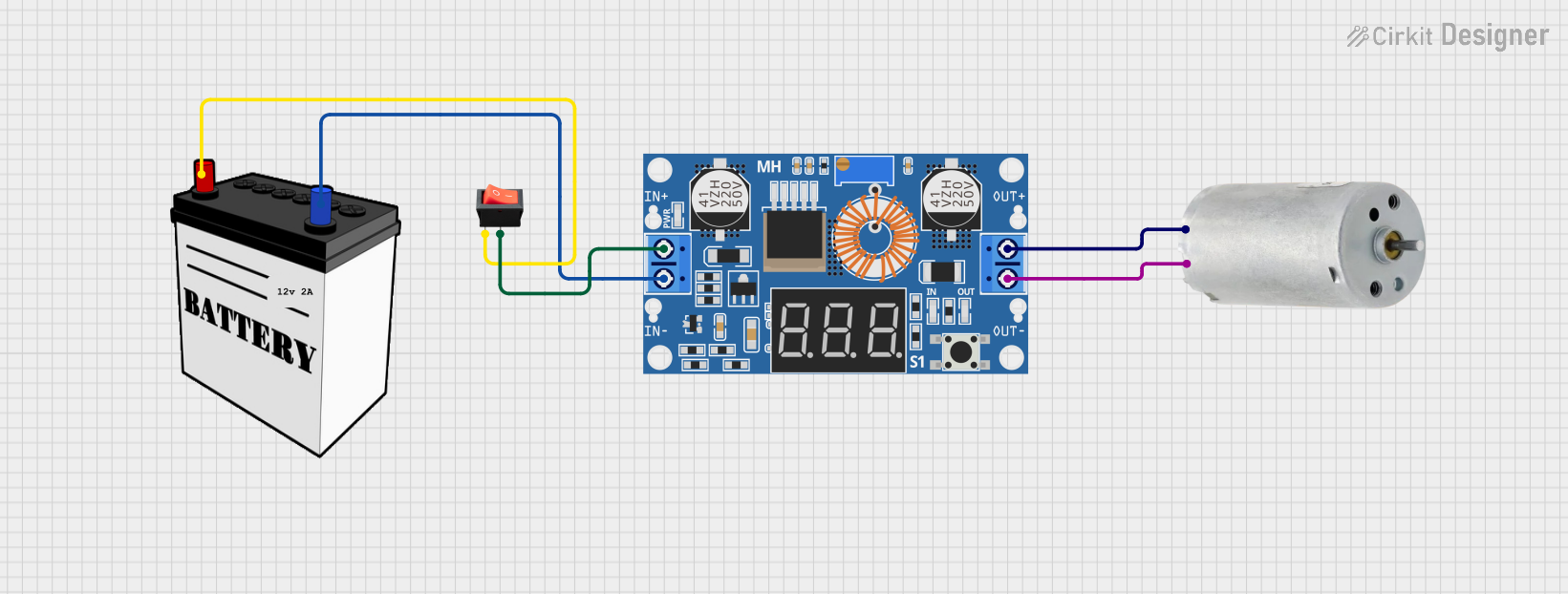
 Open Project in Cirkit Designer
Open Project in Cirkit Designer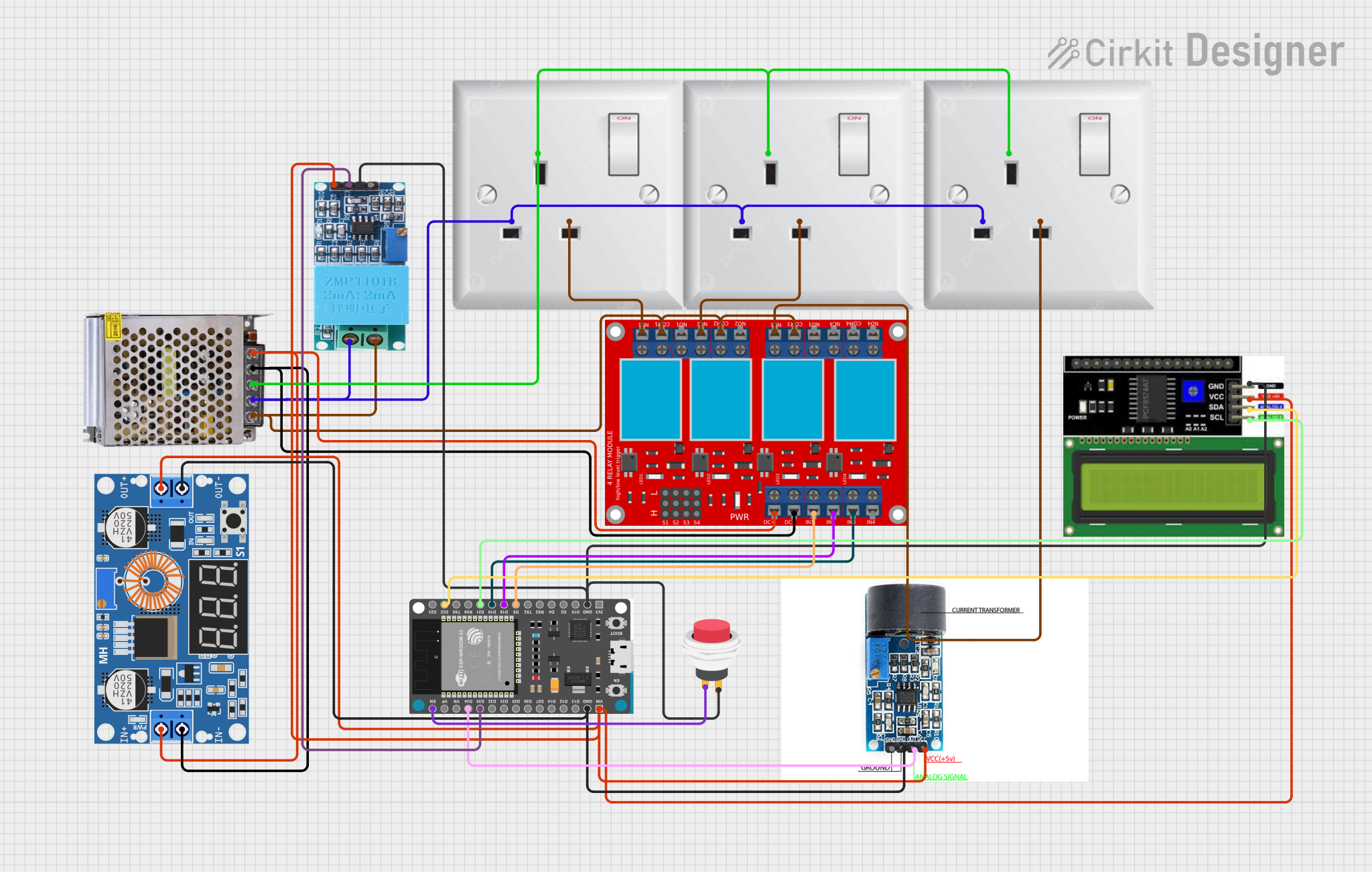
 Open Project in Cirkit Designer
Open Project in Cirkit Designer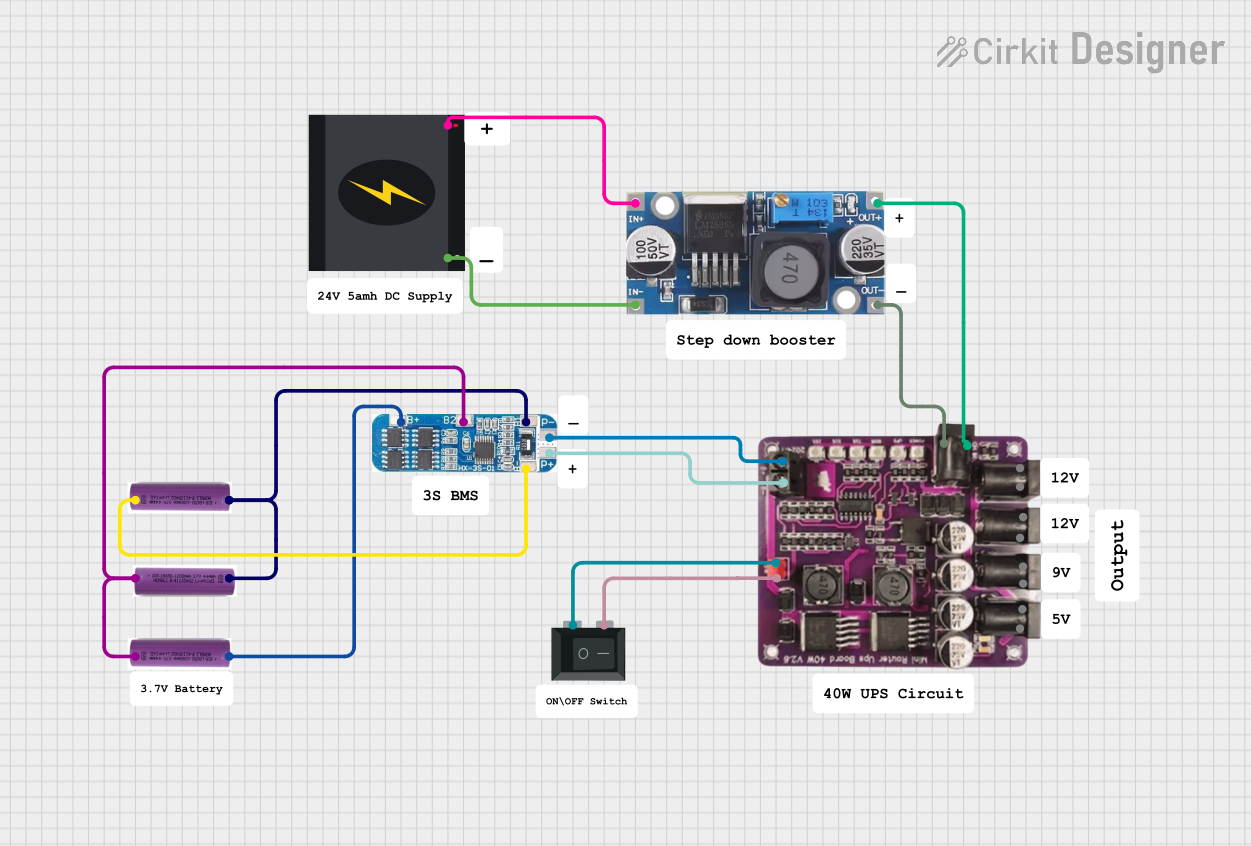
 Open Project in Cirkit Designer
Open Project in Cirkit Designer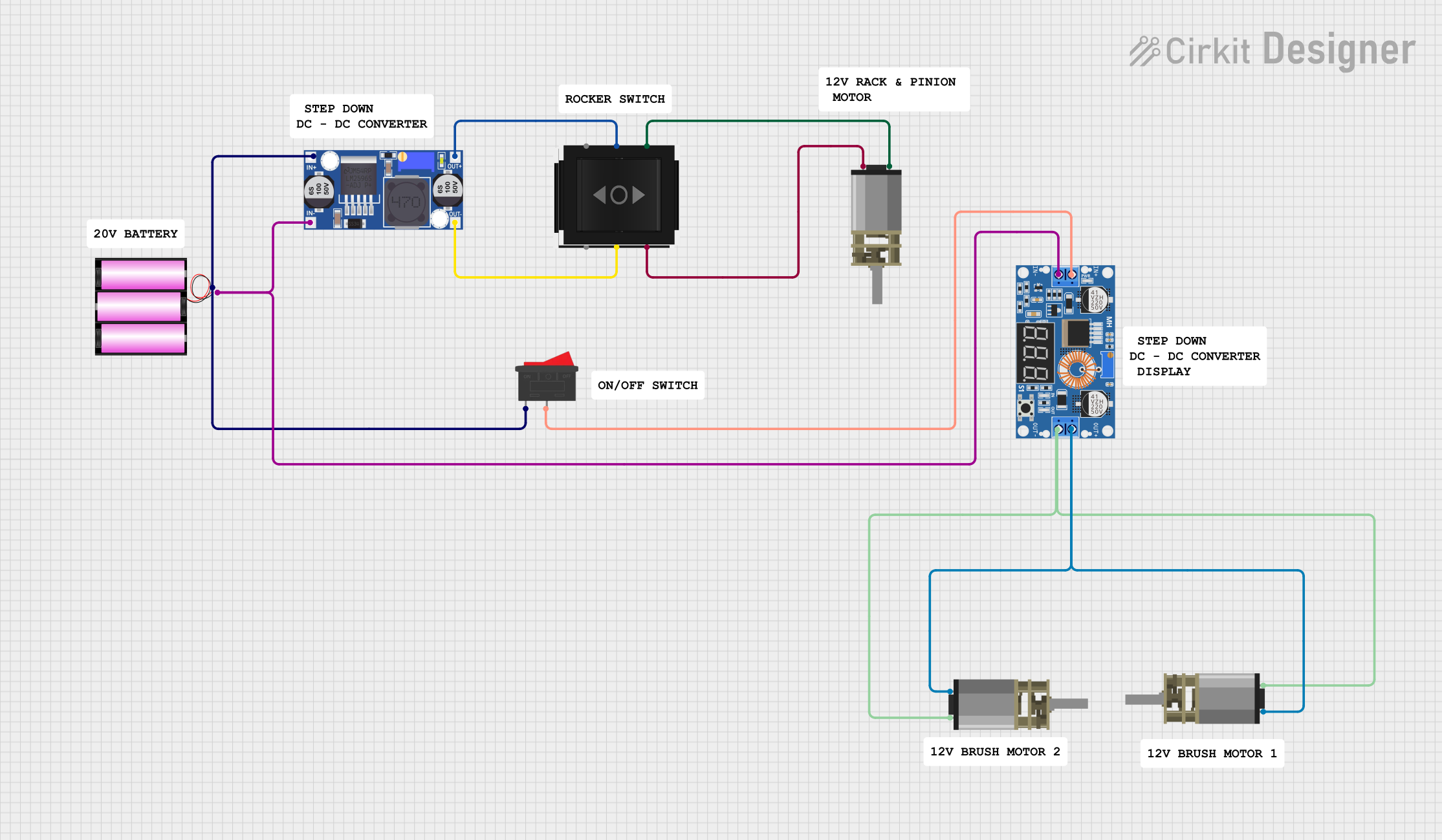
 Open Project in Cirkit Designer
Open Project in Cirkit DesignerExplore Projects Built with XL4015 Step Down 5-32V

 Open Project in Cirkit Designer
Open Project in Cirkit Designer
 Open Project in Cirkit Designer
Open Project in Cirkit Designer
 Open Project in Cirkit Designer
Open Project in Cirkit Designer
 Open Project in Cirkit Designer
Open Project in Cirkit DesignerCommon Applications and Use Cases
- Powering microcontrollers (e.g., Arduino, Raspberry Pi) from higher voltage sources
- Battery charging circuits
- LED lighting systems
- Solar power systems
- General-purpose voltage regulation in electronic projects
Technical Specifications
The XL4015 Step Down 5-32V is designed for high efficiency and flexibility. Below are its key technical specifications:
| Parameter | Value |
|---|---|
| Input Voltage Range | 5V to 32V |
| Output Voltage Range | 0.8V to 30V (adjustable) |
| Maximum Output Current | 5A (with proper heat dissipation) |
| Output Power | Up to 75W |
| Efficiency | Up to 96% |
| Switching Frequency | 180 kHz |
| Operating Temperature | -40°C to +85°C |
| Dimensions | 51mm x 26mm x 14mm |
Pin Configuration and Descriptions
The XL4015 module typically has the following pin layout:
| Pin Name | Description |
|---|---|
| VIN | Input voltage pin (connect to a DC source between 5V and 32V). |
| VOUT | Output voltage pin (provides the stepped-down voltage). |
| GND | Ground pin (common ground for input and output). |
| ADJ | Adjustment pin (used to set the output voltage and current via onboard potentiometers). |
Usage Instructions
How to Use the XL4015 in a Circuit
Connect the Input Voltage:
- Connect the VIN pin to a DC power source (e.g., a battery or power supply) within the range of 5V to 32V.
- Connect the GND pin to the ground of the power source.
Connect the Output Load:
- Connect the VOUT pin to the positive terminal of your load (e.g., a microcontroller, LED, or motor).
- Connect the GND pin to the ground of your load.
Adjust the Output Voltage and Current:
- Use the onboard potentiometers to adjust the output voltage and current:
- The voltage adjustment potentiometer allows you to set the desired output voltage.
- The current adjustment potentiometer limits the maximum output current to protect your load.
- Use the onboard potentiometers to adjust the output voltage and current:
Verify the Output:
- Use a multimeter to measure the output voltage and current to ensure they match your requirements.
Important Considerations and Best Practices
- Heat Dissipation: The XL4015 can handle up to 5A of current, but proper heat dissipation (e.g., a heatsink or active cooling) is required for high-power applications.
- Input Voltage: Ensure the input voltage is at least 1.5V higher than the desired output voltage for proper operation.
- Polarity: Double-check the polarity of your connections to avoid damaging the module.
- Load Protection: Use the current adjustment feature to prevent overcurrent damage to your load.
Example: Using the XL4015 with an Arduino UNO
The XL4015 can be used to power an Arduino UNO from a 12V power source. Below is an example setup:
- Connect the 12V power source to the VIN and GND pins of the XL4015.
- Adjust the output voltage to 5V using the voltage adjustment potentiometer.
- Connect the VOUT pin to the 5V pin of the Arduino UNO and the GND pin to the Arduino's GND.
Here is a simple Arduino code example to blink an LED, powered by the XL4015:
// Simple LED Blink Example
// Ensure the XL4015 is set to output 5V before connecting to the Arduino UNO.
const int ledPin = 13; // Pin connected to the onboard LED
void setup() {
pinMode(ledPin, OUTPUT); // Set the LED pin as an output
}
void loop() {
digitalWrite(ledPin, HIGH); // Turn the LED on
delay(1000); // Wait for 1 second
digitalWrite(ledPin, LOW); // Turn the LED off
delay(1000); // Wait for 1 second
}
Troubleshooting and FAQs
Common Issues and Solutions
No Output Voltage:
- Cause: Incorrect input connections or insufficient input voltage.
- Solution: Verify the input voltage is within the 5-32V range and check the polarity of the connections.
Output Voltage Not Adjustable:
- Cause: Faulty potentiometer or incorrect adjustment procedure.
- Solution: Turn the voltage adjustment potentiometer slowly and check the output with a multimeter.
Overheating:
- Cause: High current draw without proper heat dissipation.
- Solution: Attach a heatsink to the XL4015 module or use active cooling (e.g., a fan).
Load Not Powering On:
- Cause: Output current limit set too low.
- Solution: Adjust the current limit potentiometer to match the load's requirements.
FAQs
Q: Can the XL4015 be used to charge batteries?
A: Yes, the XL4015 is suitable for charging batteries. Ensure the output voltage and current are set according to the battery's specifications.
Q: What is the maximum input voltage for the XL4015?
A: The maximum input voltage is 32V. Exceeding this limit may damage the module.
Q: Can I use the XL4015 to power a Raspberry Pi?
A: Yes, the XL4015 can step down voltage to 5V to power a Raspberry Pi. Ensure the output current is sufficient for the Raspberry Pi model you are using.
Q: How do I know if the module is overheating?
A: If the module becomes too hot to touch or shuts down unexpectedly, it may be overheating. Use a heatsink or fan to improve heat dissipation.